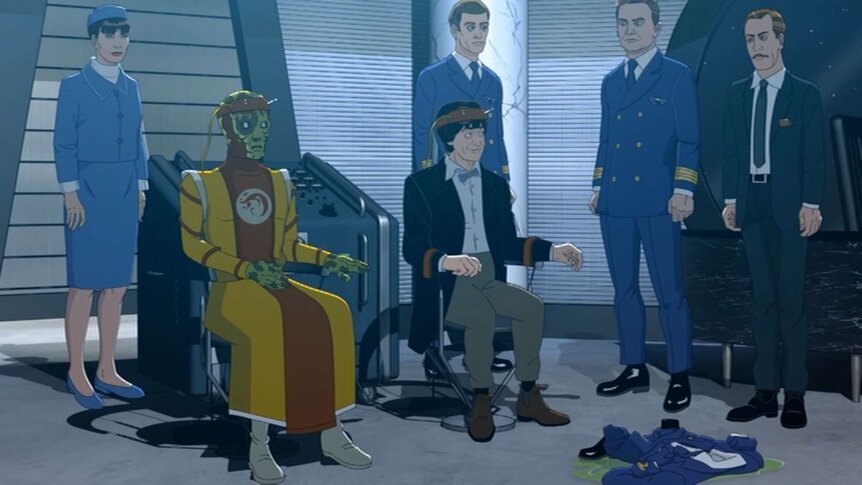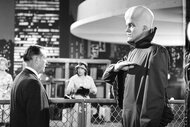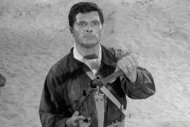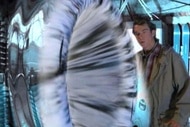Create a free profile to get unlimited access to exclusive videos, sweepstakes, and more!
The Faceless Ones is the latest 'spine-chilling' highlight in the Doctor Who restoration project
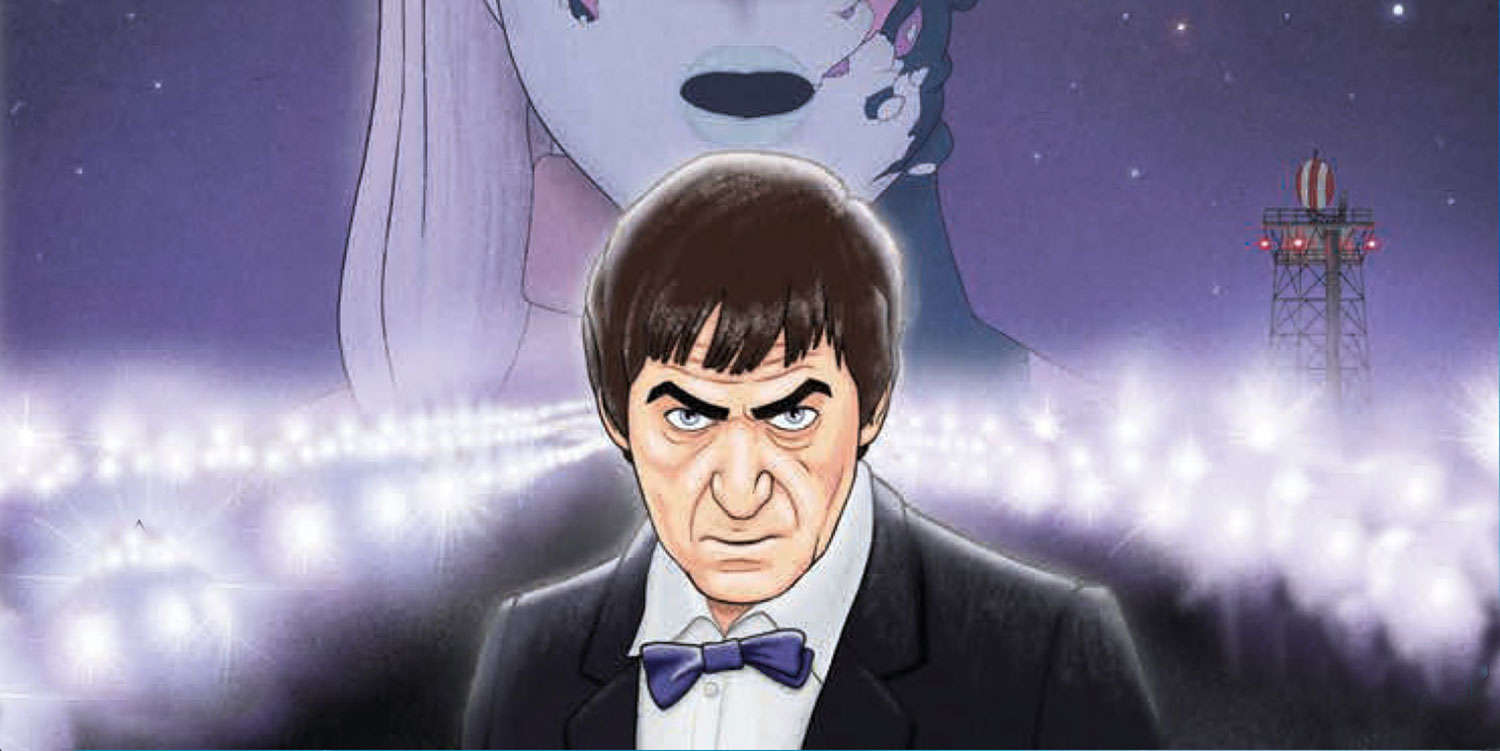
Doctor Who has been on TV so long that it dates back to a time when TV was not only considered disposable entertainment but literally disposed of regularly, creating a massive gap in its recorded history. But in the past few years, the BBC has started to undertake what could be a massive restoration project, using animation to fill in some of these gaps when the original footage is long-gone. The latest entry, The Faceless Ones, arrived on BBC America this week. It’s the third Second Doctor serial with missing episodes to be entirely animated, and one director AnneMarie Walsh describes to SYFY WIRE as “quite sinister and kind of spine-chilling.”
The Faceless Ones marks a number of firsts. For one, it is the first time two back-to-back episodes are being recreated and released in order. (The Macra Terror, which directly precedes it, was a joint project between BBC Studios and Sun & Moon released in 2019.) But even so, it’s not the first choice most fans would think of. But Walsh felt it was an interesting story, considering the attitudes of the late 1960s. “It's really scary because it's not an obvious monster, they look like humans. And they live and work amongst us," she explains.
But what makes The Faceless Ones such an exciting project is that it marks the first time animation triumphs over surviving footage. Unlike most Season 4 serials, The Faceless Ones has surviving episodes (Episodes 1 and 3, to be precise). As Walsh tells it, it was decided early on that this would be a fully animated undertaking. "Animation is a very different media, and we tell the story in a different way as to how we would in live-action, as you can imagine... but it makes sense to do all six of them for coherency," she says.
For those who don’t know, the first and third episodes of The Faceless Ones are still held in the BBC archives. Previously, when there’s live-action footage of a serial, it stays put; the animation is used to fill in the gaps. Not so here, partly because both Walsh and the BBC felt it might be off-putting, especially to those discovering these adventures for the first time. “We're doing it for two audiences,” Walsh notes. “We're doing it for the old fan base, the hardcore, loyal Doctor Who fanbase will who probably watched the telesnap reconstructions by Derek Handley, people who will be familiar with the audiotapes and everything else. [But] we also want to draw in a whole new generation of people who know the current Doctor Who and are now interested in learning from more about the classic Doctor Whos."
Walsh has been involved with the BBC Studio Doctor Who recreations since BBC Studios decided to test out how much fan interest there was in Classic Who restorations with 2016's The Power of the Daleks, the first wholly missing serial to get an animated recreation. She then worked on both Shada (the famously unfinished Fourth Doctor serial from 1980) as the animation director, and directed the DVD extra "The Wheel In Space," released with The Macra Terror. Walsh calls being invited to produce and direct The Faceless Ones "a real honor."
Talking to Walsh, it soon became clear why the BBC approach wouldn't work as a mixed-media project the way earlier recreations did. There's no attempt to do an exact recreation. Instead, the artists work from the actors' images and the surviving audio and go from there. "We're true to the script, and the idea of Doctor Who,” Walsh says.
In essence, these take artistic license to create something new from what survives. “We look at the actors in different footage, both in Doctor Who and other pieces,” Walsh says. “We tried to capture their eccentricities and idiosyncrasies and their way of acting and playing characters. We try to bring that across in the animated characters. So it's not about following and copying the live-action. It's about creating something new, but that's true to the idea."
That also explains a few of the Easter eggs fans will catch throughout the episode. Walsh doesn't want to spoil too many of them but promises eagle-eyed viewers aren't imagining things if they happen to notice, say, an image of Roger Delgado's the Master in the background, even though this is a Second Doctor episode. (Delgado wasn't cast as the Master until Season 8, the Third Doctor's second season, in 1971.)
Though Walsh emphasizes the script as the show's bible, the audio also plays a key role. "That's the one thing we do stay true to completely,” Walsh explains. “We don't record anything new. This is the 1967 recording.”
But that in itself brings a whole set of new challenges since it’s a single mono track. Walsh’s description of the process is fascinating: “So we have all the dialogue, the music, and the sound effects all trapped into one track, and we can't separate them... so we sort of have to go backward and like we'll find a sound effect, and we have to make something fit that sound effect because we can't remove it."
The sound is so vital that it's currently part of the deciding factor for missing episodes to tackle. Walsh says the ones they aim to do first are the ones with the cleanest audio to work from, because "if we don't have good audio or usable audio or any audio, then then we're doing a whole different thing."
Not to say they won't do audio recreations down the line as well. But for now, the BBC is focused on the current release of The Faceless Ones. Walsh couldn't even say what would be next up for the animation team. (The Mirror claims the series will continue in order, with rumors of the ninth serial, The Evil of The Daleks, following in the next year.) Fans will have to wait and see what comes next.
Doctor Who: The Faceless Ones will air on BBC America in two parts, with the first three episodes arriving on Wednesday, Oct. 7, and the final three on Thursday, Oct. 8, 2020, at 8 p.m. ET.
